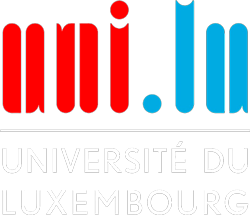Developing multilingual pedagogies in Early Childhood
Multilingual education in early childhood
In our diverse and rapidly changing societies, multilingualism is everywhere. Multilingual education programmes have been implemented in early childhood education in some European countries following calls for multilingual pedagogies. The resource-oriented pedagogy of translanguaging is one way in which practitioners can give space to institutional and home languages, leverage children’s linguistic resources and contribute to their cognitive, linguistic and emotional development. To implement multilingual pedagogies, educators can draw on professional development, considered to be a key measure to promote change.
Professional development to support change
The project MuLiPEC addresses the need for multilingual pedagogies in early childhood education in Luxembourg. It aims at developing the practitioners’ knowledge and skills in relation to effective pedagogies, and at contributing to the development of children's language repertoires in formal and non-formal education. In 2016, the researchers run two professional development courses for 46 teachers and educators working with two to five-year-olds. The emphasis was on multilingualism, language development, and activities using stories and rhymes. Seven practitioners who worked in a crèche, a day-care centre, a précoce and a preschool, continued until September 2017. They were observed and coached, and took part in six network meetings. Kirsch, Aleksić and Andersen analysed the effects of the PD and the changing multilingual practices, while Mortini investigated the children’s (trans)languaging and agency.
From monolingual to multilingual practices
The study used quantitative methods (i.e. a survey completed at three time points) and qualitative ones (i.e. observations, video-recording, interviews). The methods for data analysis included t-tests, correlational analysis, thematic analysis and conversation analysis. The findings show a change of the professionals’ perspectives, knowledge and practice: the 46 professionals developed a positive stance towards multilingual education and implemented activities in multiple languages. In addition to this, the seven practitioners designed a holistic multilingual learning environment and deployed language-supportive strategies. The findings contribute to our understanding of the ways in which professionals can move from monolingual to multilingual practices, and long-term, collaborative and performance-based professional development can influence knowledge and practices.
External partners
- Fonds National de la Recherche,
- Ministère de l'Éducation nationale, de l'Enfance et de la Jeunesse, Laurence Di Letizia (2016-2017; école fondamentale)
